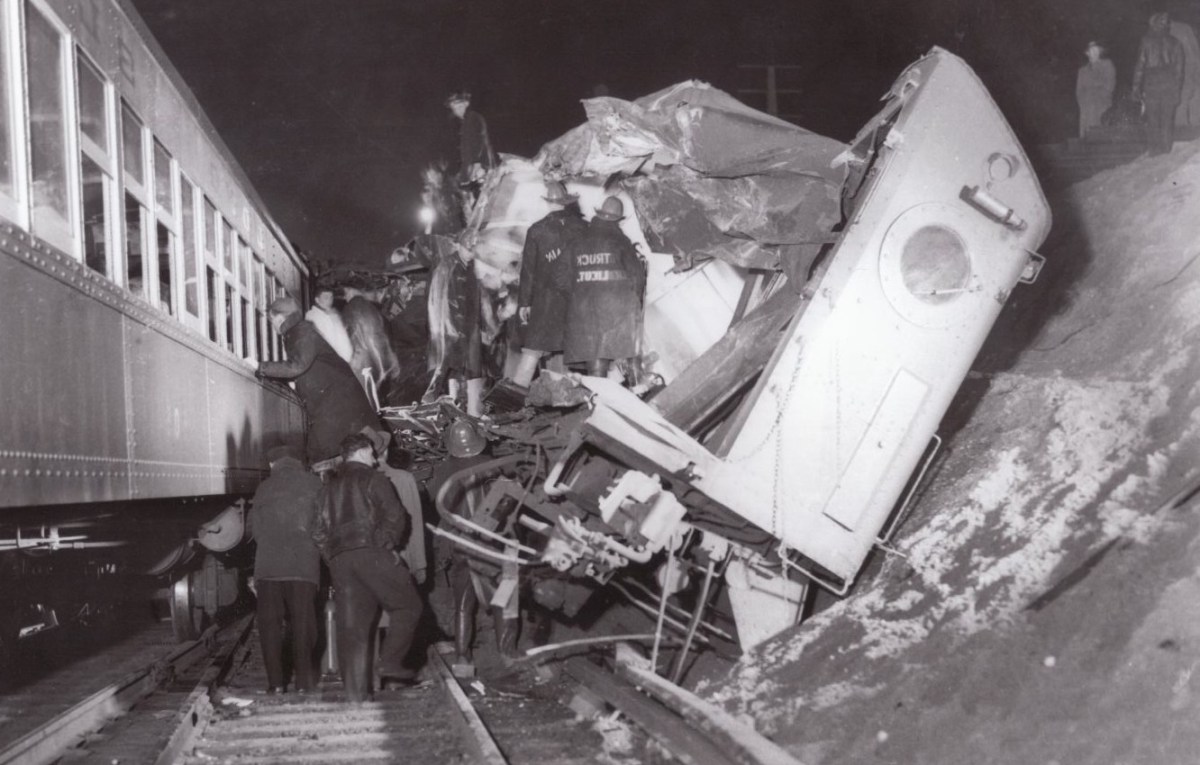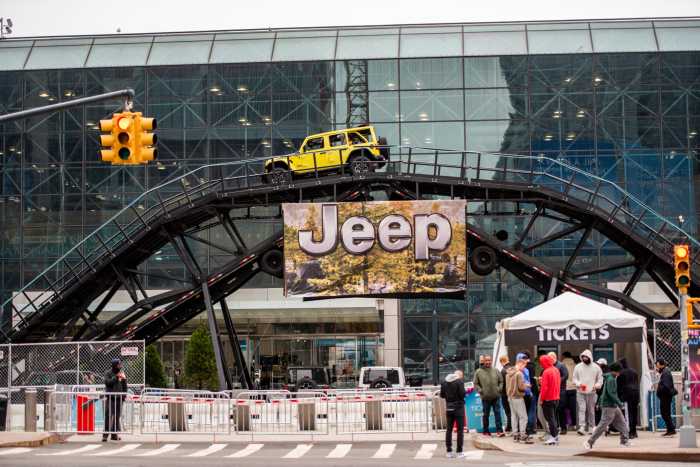Seventy-five years ago on Monday, two Long Island Rail Road trains crashed head-on just west of the Rockville Centre station, killing at least 29 people and injuring over 100.
The crash on the night of Feb. 17, 1950, was the deadliest collision in the railroad’s history at the time, until another LIRR crash in Queens killed 78 people eight months later.
“The few passengers who were interviewed were too shocked to give a very coherent account of what happened,” The New York Times reported. “They talked of a sudden stop, fallen glass and dirt filled cars.”
Two years before the crash, the railroad had installed a one-way gauntlet track as a component of its grade crossing elimination program. But that night, Jacob Kiefer, motorman of the Babylon-bound Train No. 192, ran through a stop signal. He drove his train into the gauntlet and collided head-on with Manhattan-bound Train No. 175, operated by motorman James Markin, who yanked his whistle in the final moments before the crash.
“The second car of the No. 175 buckled, jumped the track and fell against the embankment of the new overpass,” Time magazine reported in a story10 days later. “The trains came to a standstill in a second of dark and shuddering silence.”
Train No. 192 was a 12-car train carrying roughly 800 passengers. The Times reported that the impact of the collision was so strong that “one of the cars was virtually torn apart,” adding that “passengers were piled five deep on one another, sprawling amid crashing glass and crunching seats.”
Kiefer was indicted for second-degree manslaughter and charged with criminal negligence, but was later acquitted in September of that year, claiming that he “blacked out” before the crash.
Debbie Fehringer, co-president of the Rockville Centre Historical Society and The Phillips House Museum, said that Rockville Centre was already a commuter town at the time of the crash.
“Most Long Islanders, even at that point, could probably claim Brooklyn, Manhattan or Queens as where they came from,” Fehringer said. “They were probably first-generation Americans or immigrants, still traveling into those areas whether or not they were working there.”
Following the crash, the necessity for Manhattan-bound service didn’t subside. Time magazine reported in December of that year — nearly nine months after the tragedy — that the LIRR had “done little” to repair its safety record, but that “most of its customers had no better means of transportation.”
In 1951, the LIRR began installing automatic speed control to prevent these types of incidents, according to the Metropolitan Transportation Authority. In more recent years, positive train control was introduced.
“Positive train control enhances train safety by reducing the potential for human error to contribute to train-to-train collisions, trains traveling into zones where railroad employees are working on tracks, or derailments caused by a train traveling too fast into a curve or into a misaligned switch,” the MTA said in a statement. “The system uses a network of computers on board trains and along the tracks that are in communication with a central control hub, sharing data on rail conditions in real time.”
Regardless, Fehringer said that the Rockville Centre incident is a harsh reminder of the risks that come along with transit, adding that “nothing is really safe in this life.”
The historical society has a few artifacts archived from that day — a couple photographs, some paper train tickets and some timetables from that time period. Every few years, Fehringer said she gets a phone call from someone asking about the historic crash.
“It is a stain, the fact that it happened right there,” she said. “Who knows where else those types of tracks were — an accident is an accident. It’s a very sad thing.”

































